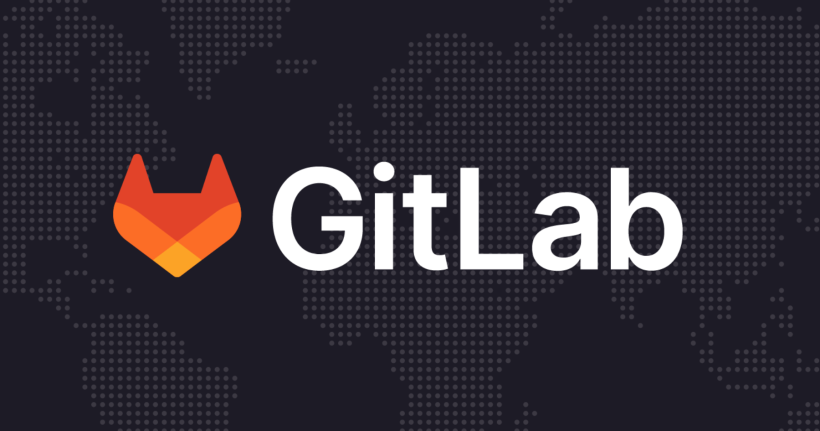Recently, I started working on a few Golang microservices. I decided to try GitLab’s caching and split the job into multiple steps for better feedback in the UI.
Since my previous posts[1][2] about CI/CD, a lot has changed. I started using Helm charts for packaging applications, and stopped using docker-in-docker in gitlab-runner.
Here are a few of the main changes to my .gitlab-ci.yml file since my previous post:
- no docker-in-docker
- using cache for packages instead of a prebuilt image with dependencies
- splitting everything into multiple steps
- autodeploy to staging environment using Helm, a package manager for Kubernetes
Building Golang image
Since Golang is very strict about the location of the project, we need to make some adjustments to the CI job. This is done in the before_script block. Simply create needed directories and link source code in there. Assuming that the official repository of the project is gitlab.example.com/librerio/libr_files it should look like this.
variables:
APP_PATH: /go/src/gitlab.example.com/librerio/libr_files
before_script:
- mkdir -p /go/src/gitlab.example.com/librerio/
- ln -s $PWD ${APP_PATH}
- mkdir -p ${APP_PATH}/vendor
- cd ${APP_PATH}
With this in place, we can install dependencies and build our binaries. To avoid the download of all packages on each build we need to configure caching. Due to the strange caching rules of GitLab, we need to add vendor directory to both cache and artifacts. Cache will give us an ability to use it between build jobs and artifacts will allow us to use it inside the same job.
cache:
untracked: true
key: "$CI_BUILD_REF_NAME"
paths:
- vendor/
setup:
stage: setup
image: lwolf/golang-glide:0.12.3
script:
- glide install -v
artifacts:
paths:
- vendor/
Build step didn’t change, it’s still about building the binary. I add binary to artifacts.
build:
stage: build
image: lwolf/golang-glide:0.12.3
script:
- cd ${APP_PATH}
- GOOS=linux GOARCH=amd64 CGO_ENABLED=0 go build -o release/app -ldflags '-w -s'
- cd release
artifacts:
paths:
- release/
Test stage
To run golang tests with coverage reports I’m using the variation of this shell script. It runs all tests in project subdirectories and creates a coverage report. I changed it a bit before putting into a gist. I exclude vendor directory from tests.
- coverage regexp for gitlab-ci:
^total:\s*\(statements\)\s*(\d+.\d+\%)
Deploy stage
I don’t use native GitLab’s integration with Kubernetes.
First I thought about creating Kubernetes secrets and mounting it to the gitlab-runner pod. But it’s very complicated. You need to upgrade deployment every time you want to add new Kubernetes cluster configurations. So I’m using GitLab’s CI/CD variables with base64 encoded Kubernetes config. Each project can have any number of configurations. The process is easy – create base64 string from the configuration file and copy it to the clipboard. After this, put it into kube_config variable (name it whatever you like).
cat ~/.kube/config | base64 | pbcopy
If you do not own a full GitLab installation, consider creating a Kubernetes user with restricted permissions.
Then on the deploy stage, we can decode this variable back into the file and use it with kubectl.
variables:
KUBECONFIG: /etc/deploy/config
deploy:
...
before_script:
- mkdir -p /etc/deploy
- echo ${kube_config} | base64 -d > ${KUBECONFIG}
- kubectl config use-context homekube
- helm init --client-only
- helm repo add stable https://kubernetes-charts.storage.googleapis.com/
- helm repo add incubator https://kubernetes-charts-incubator.storage.googleapis.com/
- helm repo update
Deploy stage also covers the case when you have several versions of the same application.
For example, you have two versions of API: v1.0 and v1.1. All you need to do is set appVersion in Chart.yaml file. Build system will check API version and either deploy or upgrade needed release.
- export API_VERSION="$(grep "appVersion" Chart.yaml | cut -d" " -f2)"
- export RELEASE_NAME="libr-files-v${API_VERSION/./-}"
- export DEPLOYS=$(helm ls | grep $RELEASE_NAME | wc -l)
- if [ ${DEPLOYS} -eq 0 ]; then helm install --name=${RELEASE_NAME} . --namespace=${STAGING_NAMESPACE}; else helm upgrade ${RELEASE_NAME} . --namespace=${STAGING_NAMESPACE}; fi
tl;dr
Here is complete `.gitlab-ci.yaml` file for reference.
cache:
untracked: true
key: "$CI_BUILD_REF_NAME"
paths:
- vendor/
before_script:
- mkdir -p /go/src/gitlab.example.com/librerio/
- ln -s $PWD ${APP_PATH}
- mkdir -p ${APP_PATH}/vendor
- cd ${APP_PATH}
stages:
- setup
- test
- build
- release
- deploy
variables:
CONTAINER_IMAGE: ${CI_REGISTRY}/${CI_PROJECT_PATH}:${CI_BUILD_REF_NAME}_${CI_BUILD_REF}
CONTAINER_IMAGE_LATEST: ${CI_REGISTRY}/${CI_PROJECT_PATH}:latest
DOCKER_DRIVER: overlay2
KUBECONFIG: /etc/deploy/config
STAGING_NAMESPACE: app-stage
PRODUCTION_NAMESPACE: app-prod
APP_PATH: /go/src/gitlab.example.com/librerio/libr_files
POSTGRES_USER: gorma
POSTGRES_DB: test-${CI_BUILD_REF}
POSTGRES_PASSWORD: gorma
setup:
stage: setup
image: lwolf/golang-glide:0.12.3
script:
- glide install -v
artifacts:
paths:
- vendor/
build:
stage: build
image: lwolf/golang-glide:0.12.3
script:
- cd ${APP_PATH}
- GOOS=linux GOARCH=amd64 CGO_ENABLED=0 go build -o release/app -ldflags '-w -s'
- cd release
artifacts:
paths:
- release/
release:
stage: release
image: docker:latest
script:
- cd ${APP_PATH}/release
- docker login -u gitlab-ci-token -p ${CI_BUILD_TOKEN} ${CI_REGISTRY}
- docker build -t ${CONTAINER_IMAGE} .
- docker tag ${CONTAINER_IMAGE} ${CONTAINER_IMAGE_LATEST}
- docker push ${CONTAINER_IMAGE}
- docker push ${CONTAINER_IMAGE_LATEST}
test:
stage: test
image: lwolf/golang-glide:0.12.3
services:
- postgres:9.6
script:
- cd ${APP_PATH}
- curl -o coverage.sh https://gist.githubusercontent.com/lwolf/3764a3b6cd08387e80aa6ca3b9534b8a/raw
- sh coverage.sh
deploy_staging:
stage: deploy
image: lwolf/helm-kubectl-docker:v152_213
before_script:
- mkdir -p /etc/deploy
- echo ${kube_config} | base64 -d > ${KUBECONFIG}
- kubectl config use-context homekube
- helm init --client-only
- helm repo add stable https://kubernetes-charts.storage.googleapis.com/
- helm repo add incubator https://kubernetes-charts-incubator.storage.googleapis.com/
- helm repo update
script:
- cd deploy/libr-files
- helm dep build
- export API_VERSION="$(grep "appVersion" Chart.yaml | cut -d" " -f2)"
- export RELEASE_NAME="libr-files-v${API_VERSION/./-}"
- export DEPLOYS=$(helm ls | grep $RELEASE_NAME | wc -l)
- if [ ${DEPLOYS} -eq 0 ]; then helm install --name=${RELEASE_NAME} . --namespace=${STAGING_NAMESPACE}; else helm upgrade ${RELEASE_NAME} . --namespace=${STAGING_NAMESPACE}; fi
environment:
name: staging
url: https://librerio.example.com
only:
- master
How to create a CI/CD pipeline with Auto Deploy to Kubernetes using GitLab and Helm was originally published on Lwolfs Blog.
Photo by C Chapman on Unsplash



